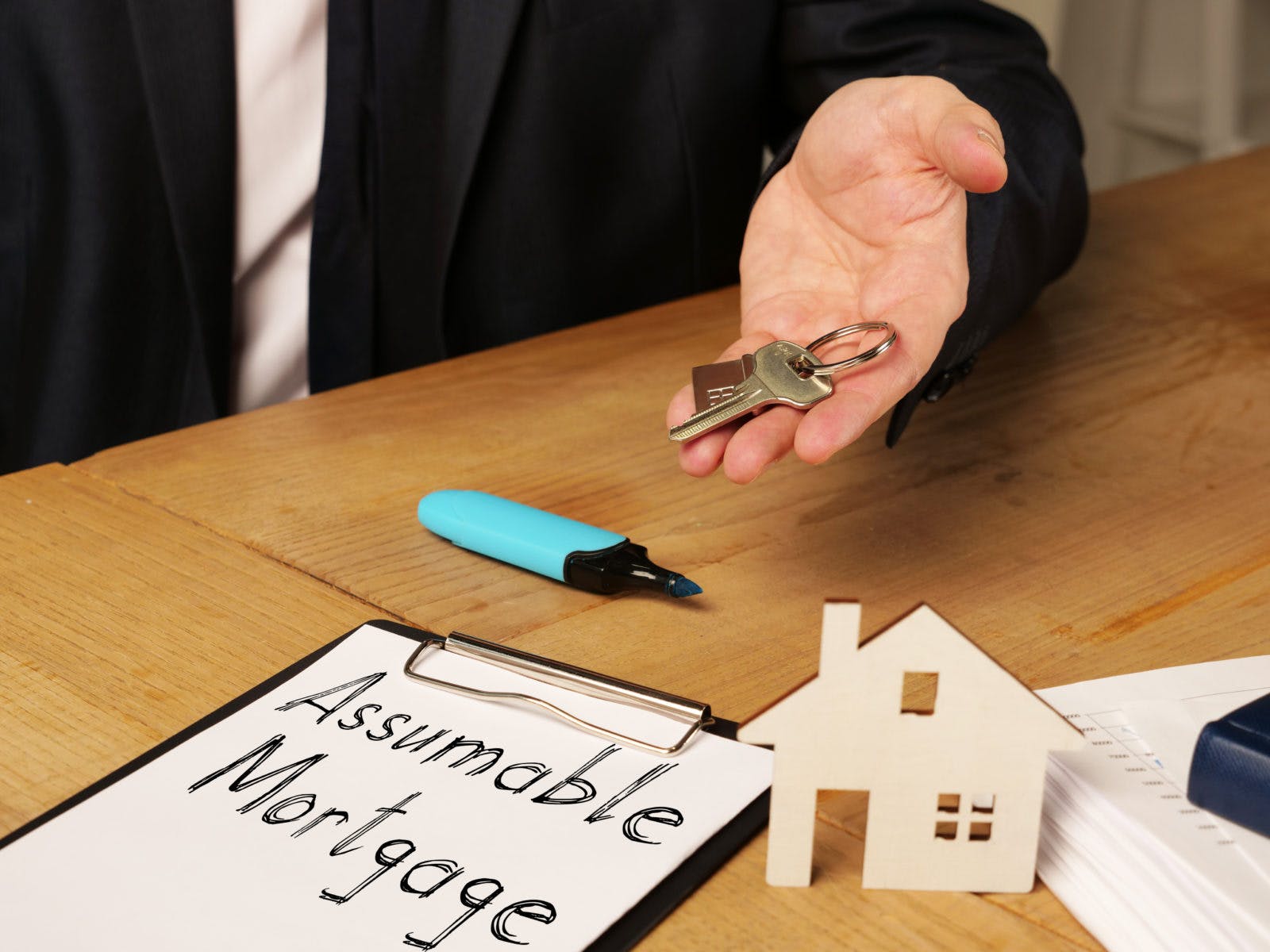Most homeowners are enjoying low interest rates on their mortgages while lacking the motivation to sell when financing costs today are high. At the same time buyers are sitting on the sidelines, waiting patiently for rates to fall amid low housing inventory and rising home prices.
Welcome to our rate-lock world where neither party can move forward confidently without paying a heavy price. It’s an unenviable position to be in when thinking of buying or selling a home but there is at least one potential solution – the assumable mortgage.
An assumable mortgage allows homeowners to sell their property to a buyer who agrees to take legal responsibility for the sellers’ government-backed loan and pay it off according to the terms, including that deliciously low interest rate that can deliver long-term savings. The mortgage transfer – in the industry called a “novation” – often requires a fee, approval from the lender and possibly slight changes to the payment plan. (This is more common than a seller-to-buyer direct transfer known as a ”simple assumption,” a riskier proposition for both parties because it leaves the lender out of the picture.)
This is hardly a new concept but it was less desirable during the heady years of historically low interest rates. Assumable mortgages were more common a few decades ago and can help break down some barriers to homeownership today.
Fees are typically lower than costs related to new loans and no appraisal is usually needed, but there will still be some of the traditional closing costs that could be about 3% of the purchase price. Buyers must submit to the application and underwriting process to qualify, just as they would in any new mortgage.
Ted Tozer, the former head of government mortgage service agency Ginnie Mae, argues that government improvements to assumable loans could benefit the market at a critical time in a slower housing environment. The loans allow sellers to get top dollar on a home and buyers to assume the lower mortgage rate.
Why is this option rarely discussed? In short, its popularity is held back by strict rules and product limitations.
For example, only certain mortgages are assumable – backed by the Federal Housing Administration (FHA) and Department of Veterans Affairs (VA). A mortgage from the Department of Agriculture and some conventional adjustable-rate mortgages may be assumable under specific conditions. Because Fannie Mae and Freddie Mac loans – nearly two-thirds of the mortgage market – are not eligible, assumables are a niche product.
There is another potential obstacle for buyers. Since the sales price will likely exceed the remaining balance on the mortgage, buyers must come up with a secondary amount to pay the difference. That can be a second mortgage (typically known in these cases as a piggyback loan), cash or a blend of both. Lenders will still need to qualify buyers on that second loan just as they would for a traditional first mortgage – and, yes, it will likely come with a far higher interest rate than the assumable mortgage.
Here’s an example: If buyers wish to purchase a home for $800K and take over the remaining $500K on an FHA mortgage, they would be on the hook for the $300K balance through either cash, a second loan or a combination of the two. If buyers want to put a down payment of $50,000 on the home, they will still need to figure out how to pay the remaining amount of $250K ($800,000 – $500,000 – $50,000 = $250,000) – a potential financial roadblock to using this option.
The Mortgage Bankers Association estimates it costs about $2,500 to formally transfer responsibility for the assumable loan. Most – if not all – of that amount is passed onto the buyers and that may not cover special fees, so always discuss the true bottom-line costs with your lender and escrow representative well in advance of closing.
When a VA loan is taken over, if the assuming qualified buyer is a non-veteran, the seller’s VA entitlement will remain tied to the assumed property. This means these sellers cannot purchase another property through a VA loan until the assumed mortgage is paid off.
As long as rates remain higher than in recent times, assumable mortgages are a viable option. That window of opportunity is wide open now and will likely stay that way until rates return to the 4s or slightly higher.
On the flip side, sellers handing over responsibility for the payments must be fully absolved from future obligations to repay the loan if, for example, the new owner fails to make payments. If the sellers remain linked to the mortgage and the buyer defaults on the loan, then the original mortgage holder can be on the hook to clear that debt. A seller would be wise to consult with a real estate attorney to ensure liability is fully released before completing such a deal.
For more information on assumable mortgages, contact me and I will be happy to refer you to loan consultants and a better understanding of navigating this financing option.




